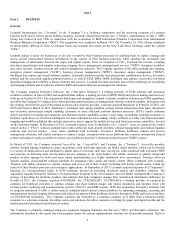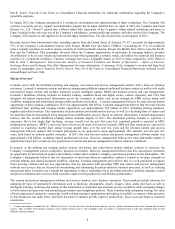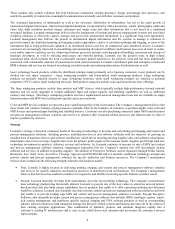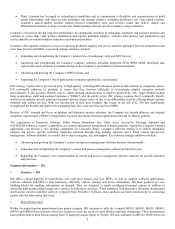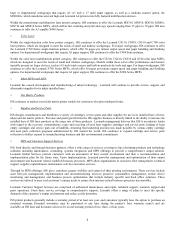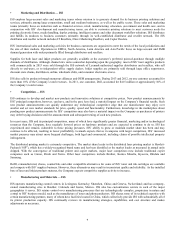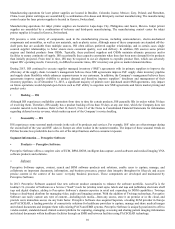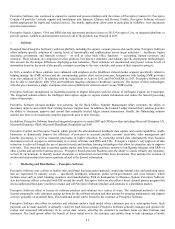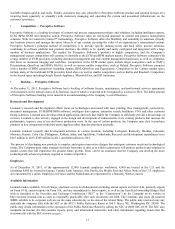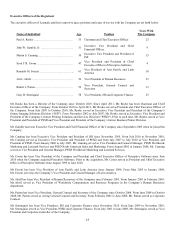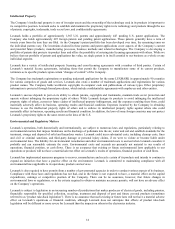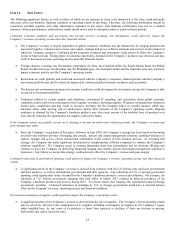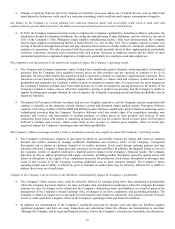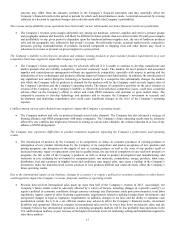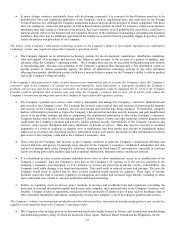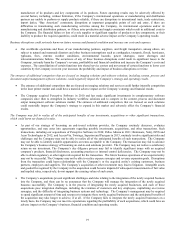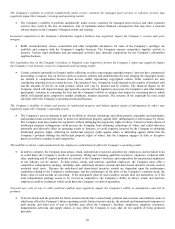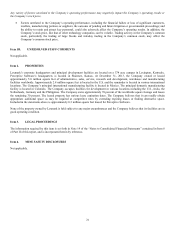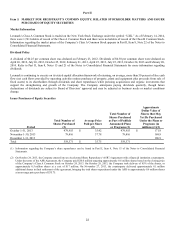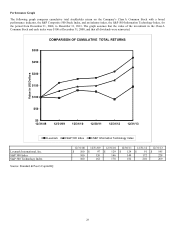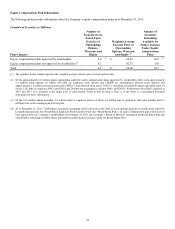Lexmark 2013 Annual Report Download - page 18
Download and view the complete annual report
Please find page 18 of the 2013 Lexmark annual report below. You can navigate through the pages in the report by either clicking on the pages listed below, or by using the keyword search tool below to find specific information within the annual report.Intellectual Property
The Company’s intellectual property is one of its major assets and the ownership of the technology used in its products is important to
its competitive position. Lexmark seeks to establish and maintain the proprietary rights in its technology and products through the use
of patents, copyrights, trademarks, trade secret laws, and confidentiality agreements.
Lexmark holds a portfolio of approximately 1,365 U.S. patents and approximately 447 pending U.S. patent applications. The
Company also holds approximately 695 foreign patents and pending patent applications. These patents generally have a term of
twenty years from the time they are filed. As the Company’s patent portfolio has been developed over time, the remaining terms on
the individual patents vary. The inventions claimed in these patents and patent applications cover aspects of the Company’s current
and potential future products, manufacturing processes, business methods and related technologies. The Company is developing a
portfolio of patents that protects its product lines and offers the possibility of entering into licensing agreements with others. While we
believe that our portfolio of patents and applications has value, no single patent is in itself essential to our business as a whole or any
individual segment.
Lexmark has a variety of intellectual property licensing and cross-licensing agreements with a number of third parties. Certain of
Lexmark’s material license agreements, including those that permit the Company to manufacture some of its current products,
terminate as to specific products upon certain “changes of control” of the Company.
The Company has trademark registrations or pending trademark applications for the name LEXMARK in approximately 90 countries
for various categories of goods and services. Lexmark also owns a number of trademark applications and registrations for various
product names. The Company holds worldwide copyrights in computer code and publications of various types. Other proprietary
information is protected through formal procedures, which include confidentiality agreements with employees and other entities.
Lexmark’s success depends in part on its ability to obtain patents, copyrights and trademarks, maintain trade secret protection and
operate without infringing the proprietary rights of others. While Lexmark designs its products to avoid infringing the intellectual
property rights of others, current or future claims of intellectual property infringement, and the expenses resulting there from, could
materially adversely affect its business, operating results and financial condition. Expenses incurred by the Company in obtaining
licenses to use the intellectual property rights of others and to enforce its intellectual property rights against others also could
materially affect its business, operating results and financial condition. In addition, the laws of some foreign countries may not protect
Lexmark’s proprietary rights to the same extent as the laws of the U.S.
Environmental and Regulatory Matters
Lexmark’s operations, both domestically and internationally, are subject to numerous laws and regulations, particularly relating to
environmental matters that impose limitations on the discharge of pollutants into the air, water and soil and establish standards for the
treatment, storage and disposal of solid and hazardous wastes. Lexmark could incur substantial costs, including cleanup costs, fines
and civil or criminal sanctions, and third-party damage or personal injury claims, if we were to violate or become liable under
environmental laws. The liability for environmental remediation and other environmental costs is accrued when Lexmark considers it
probable and can reasonably estimate the costs. Environmental costs and accruals are presently not material to our results of
operations, financial position, or cash flows. There is no assurance that existing or future environmental laws applicable to our
operations or products will not have a material adverse effect on Lexmark’s results of operations, financial position or cash flows.
Lexmark has implemented numerous programs to recover, remanufacture and recycle certain of its products and intends to continue to
expand on initiatives that have a positive effect on the environment. Lexmark is committed to maintaining compliance with all
environmental laws applicable to its operations, products and services.
Lexmark is also required to have permits from a number of governmental agencies in order to conduct various aspects of its business.
Compliance with these laws and regulations has not had, and in the future is not expected to have, a material effect on the capital
expenditures, earnings or competitive position of the Company. There can be no assurance, however, that future changes in
environmental laws or regulations, or in the criteria required to obtain or maintain necessary permits, will not have an adverse effect
on the Company’s operations.
Lexmark is subject to legislation in an increasing number of jurisdictions that makes producers of electrical goods, including printers,
financially responsible for specified collection, recycling, treatment and disposal of past and future covered products (sometimes
referred to as “product take-back legislation”). There is no assurance that such existing or future laws will not have a material adverse
effect on Lexmark’s operations or financial condition, although Lexmark does not anticipate that effects of product take-back
legislation will be different or more severe for Lexmark than the impacts on others in the electronics industry.
14


